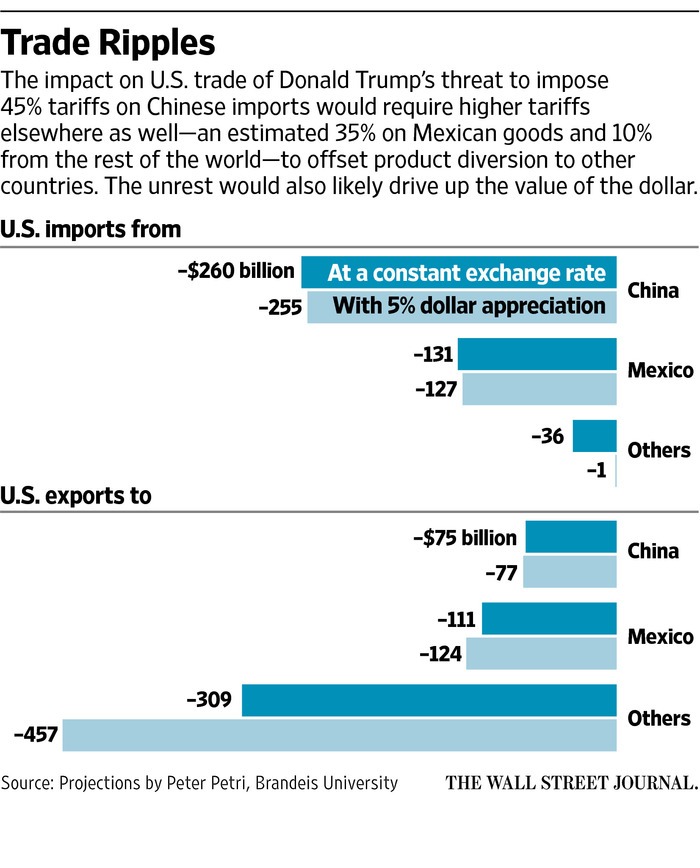Evaluating The Consequences Of Trump's Trade Approach On US Economic Supremacy

Table of Contents
The Rise of Protectionism Under Trump's Trade Approach
Trump's trade approach was characterized by a significant increase in protectionist measures, aiming to bolster domestic industries and reduce the US trade deficit. This strategy involved two primary components: the imposition of tariffs and the renegotiation of existing trade agreements.
Tariff Impositions and their Impact
Trump's administration imposed tariffs on a wide range of goods, significantly impacting global trade.
- Steel and Aluminum Tariffs: These tariffs, imposed under Section 232 of the Trade Expansion Act of 1962, targeted imports from various countries, including Canada, Mexico, and the European Union.
- Tariffs on Chinese Goods: A significant number of tariffs were imposed on Chinese goods, escalating into a protracted trade war. These targeted sectors ranging from technology to consumer goods.
- Retaliatory Tariffs: These actions sparked retaliatory tariffs from numerous countries, creating a complex web of trade restrictions and harming global economic growth.
The immediate effects included increased prices for consumers and disruptions to businesses relying on imported materials. For instance, the steel and aluminum tariffs increased costs for manufacturers reliant on these inputs, impacting competitiveness. Data from the Peterson Institute for International Economics showed a measurable negative impact on US GDP growth due to the trade wars.
Renegotiation of Existing Trade Agreements
A cornerstone of Trump's trade approach was the renegotiation of existing trade agreements, most notably the North American Free Trade Agreement (NAFTA). This resulted in the United States-Mexico-Canada Agreement (USMCA).
- NAFTA to USMCA: While the USMCA retained the core framework of NAFTA, it included changes to rules of origin for automobiles, strengthened intellectual property protections, and included provisions related to digital trade.
- Impact on US Businesses and Workers: The changes in USMCA had varied effects on different sectors. Some industries benefited from improved market access, while others faced challenges adapting to new regulations.
- Effectiveness of Renegotiated Agreements: The long-term effectiveness of the renegotiated agreements remains a subject of ongoing debate, with differing perspectives on their impact on US economic growth and job creation.
Impact on US Industries and Global Supply Chains
Trump's trade policies created both winners and losers among US industries, significantly disrupting global supply chains.
Winners and Losers of Trump's Trade Policies
Certain sectors, such as domestic steel producers, experienced temporary benefits from protectionist measures due to reduced competition. However, many other industries, particularly those heavily reliant on imports or exports, faced significant challenges.
- Beneficiaries: Domestic steel and aluminum producers initially saw increased demand and higher prices.
- Sufferers: Manufacturers reliant on imported components faced increased costs and reduced competitiveness. Farmers experienced substantial losses due to retaliatory tariffs imposed by China. Case studies of specific companies impacted by the tariffs highlight the diverse consequences.
The long-term implications for these industries are still unfolding, with concerns about reduced innovation and efficiency due to protectionism.
Disruption to Global Supply Chains
The trade wars instigated by Trump's trade approach created significant disruptions to global supply chains. Businesses faced increased costs, complexities, and uncertainty.
- Increased Costs and Complexities: Tariffs and trade restrictions increased the costs of importing and exporting goods, creating logistical challenges for businesses.
- Impact on US Manufacturing: While some argue that protectionism boosted domestic manufacturing, others contend that it hindered the efficiency and innovation that comes from global integration.
- Shift towards Regionalization: The disruptions caused by Trump's trade approach spurred a shift towards regionalization of supply chains, with companies seeking to reduce reliance on geographically distant suppliers.
Long-Term Effects on US Economic Supremacy
The long-term consequences of Trump's trade approach on US economic supremacy are complex and multifaceted.
Impact on Economic Growth and Competitiveness
The imposition of tariffs and the resulting trade wars undeniably affected US economic growth. While some argue that protectionism protected certain industries, others point to the negative impact on overall GDP and reduced consumer surplus. Furthermore, the impact on US competitiveness in global markets is a subject of ongoing debate. Some argue that protectionism decreased innovation, while others maintain that it strengthened some domestic industries. Foreign investment also potentially suffered due to the increased uncertainty.
Geopolitical Implications and Alliances
Trump's trade policies significantly strained relationships with key trading partners, leading to increased geopolitical tensions. The multilateral trading system, exemplified by the World Trade Organization (WTO), faced challenges due to the rise of bilateralism and the disregard for established norms. This shift in global power dynamics, including strained relations with traditional allies, remains a consequence of this approach. The long-term implications for national security, as global trade becomes more fragmented, are complex and uncertain.
Conclusion
Trump's trade approach had a profound and lasting impact on the US economy and its global standing. While certain sectors may have experienced short-term benefits from protectionist measures, the overall effects on economic growth, competitiveness, and geopolitical relations remain a significant area of concern and ongoing debate. The disruption to global supply chains and the increased tensions with trading partners have far-reaching consequences. Understanding the complexities of Trump's trade approach is crucial for shaping future US trade strategies. Continue your research and contribute to the ongoing conversation about how to achieve sustainable economic supremacy through informed trade policies.

Featured Posts
-
 The Next Pope How Franciss Legacy Will Shape The Conclave
Apr 22, 2025
The Next Pope How Franciss Legacy Will Shape The Conclave
Apr 22, 2025 -
 Pope Franciss Legacy The Conclaves Crucial Test
Apr 22, 2025
Pope Franciss Legacy The Conclaves Crucial Test
Apr 22, 2025 -
 Assessing The Impact Of Tariffs On Chinas Exports
Apr 22, 2025
Assessing The Impact Of Tariffs On Chinas Exports
Apr 22, 2025 -
 Google Breakup A Deep Dive Into The Potential Consequences
Apr 22, 2025
Google Breakup A Deep Dive Into The Potential Consequences
Apr 22, 2025 -
 From Scatological Documents To Insightful Podcasts The Power Of Ai
Apr 22, 2025
From Scatological Documents To Insightful Podcasts The Power Of Ai
Apr 22, 2025
